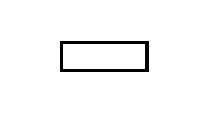T.O. 33B-1-1
and the descriptions of the first four kinds of developers are referenced in ASTM E 165, Standard Test
Method for Liquid Penetrant Examination. The MIL-I-25135 has been superseded by an Aerospace Material
Specification (AMS) 2644.
2.2.5.3
Penetrant System.
CAUTION
The penetrant system concept does not allow the mixing together of solvents
or developers from different manufacturers. For example, a qualified non-
halogenated solvent remover from manufacturer A may not be mixed with a
qualified non-halogenated solvent remover from manufacturer B, and a
qualified water soluble developer from manufacturer C may not be mixed
with a qualified water soluble developer from manufacturer D.
A penetrant system is defined as a penetrant and emulsifier together, from the same manufacturer. ASM
2644 requires that a penetrant / emulsifier combination be qualified and used together for the two
postemulsifiable methods. For the water washable and solvent removable methods the penetrant system
consists of the penetrant alone. Solvent removers and developers are qualified independently and may be
used with any qualified penetrant system. Therefore, a qualified postemulsifiable penetrant system from
one manufacturer may be used with any qualified developer; a qualified solvent removable system may be
used with any qualified solvent and developer, and a qualified water washable penetrant system may be used
with any qualified developer (approved for water washable systems).
2.2.5.4
Requirements.
The ASM 2644 is used to procure penetrant materials and requires manufacturers to conduct extensive tests
on new formulations of penetrant materials. The test reports, plus a sample of the material, are then
submitted to the Government Qualifying Agency. The Qualifying Agency reviews the reports and conducts
additional tests to verify the acceptability of the material. If the candidate material(s) meets or exceeds the
requirements of the specification, a letter of notification approving the material(s) for listing is issued and at
the next revision, the material(s) and manufacturer are listed on the Qualified Products List, QPL-25135. All
materials listed in a given classification category are considered equivalent in meeting the generic specifica-
tion requirements. Consequently, any manufacturer’s penetrant system listed in the QPL, for a given type,
sensitivity, and removal mode may be substituted for any other penetrant system listed to the same
classification.
2.2.5.4.1
Sensitivity.
ASM 2644 requires candidate materials and systems to equal or exceed the performance of the appropriate
reference system or material. Additionally, the Method D systems must be qualified with the hydrophilic
emulsifier concentration at the maximum recommended by the manufacturer; this concentration is listed on
the qualified products list (QPL) and shall not be exceeded. Reference materials were selected from available
commercial products to represent typical examples of each classification of material listed in Table 2-1 except
Dual Mode penetrants and Specific Application developers and solvent removers. There are reference
f luorescent penetrants for each sensitivity level. The reference dry developer is used to process both the
candidate and the reference materials except for visible penetrant systems (Type II) where the nonaqueous
(wet) reference developer (Form e) is used. Two examples follow.
a.
A candidate Type I/Method D/Level 3 penetrant system is processed with the reference dry developer
and the brightness of the resulting crack indications are compared to the results from processing the
same crack standards using the reference Type I/Method D/ Level 3 hydrophilic penetrant system
(postemulsifiable reference penetrant and reference hydrophilic emulsifier) and the reference
developer.
b.
Any candidate developer for use with f luorescent penetrant systems is processed with the Level 4
lipophilic system and the results compared to the results from processing the same crack standards
with the same reference penetrant system and the reference developer.
Change 2
2-11


